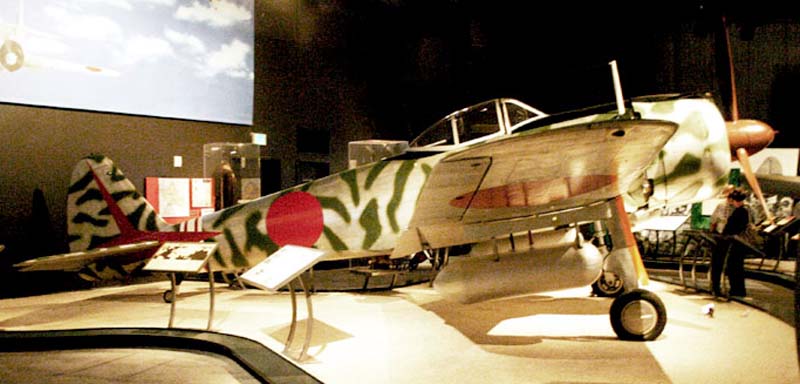| Nakajima | ||||||||||||
|
Ki-43-IIIa Hayahusa |
||||||||||||
 |
||||||||||||
|
Photo: Robert Deering 9/3/2011 Seattle Museum of Flight King County International Airport (BFI) Seattle, Washington |
||||||||||||
|
Nakajima’s Ki-43 Hayabusa (“Peregrine Falcon”) entered service with the Imperial Japanese Army Air Force (I.J.A.A.F.) in late 1941 and served until the end of World War II. When production ended in August 1945, Nakajima and Tachikawa had built 5,919 Ki-43s, making the Hayabusa the I.J.A.A.F.’s most-widely produced aircraft. Known to Allied pilots by the codename Oscar, the Hayabusa was perhaps the most maneuverable fighter of World War II – even more maneuverable than the Imperial Japanese Navy’s legendary Mitsubishi Zero (for which the Hayabusa was often mistaken). The Hayabusa, however, shared the Zero’s shortcomings: Inadequate offensive firepower and inadequate defensive armor, deficiencies that proved increasingly lethal for Japanese pilots from 1943 on.
The Museum’s aircraft depicts a Tachikawa-built Ki-43-IIIa of the 3rd Chutai (“Fighter Squadron”), 54th Sentai (“Fighter Group”), based on Shumshu in the Kurile Islands in 1945, from whence it defended the Japanese Home Islands against raids by American bombers based in the Aleutian Islands. This Haybusa reproduction incorporates parts from four wrecked Ki-43s recovered from Shumshu by the noted warbird collector Doug Champlin in the 1990s. GossHawk Unlimited of Casa Grande, Arizona, completed the reproduction in 2008, with Col. Hiroo Murata, Japan Air Self-Defense Force (Ret.), as technical advisor. |
||||||||||||
|
||||||||||||
